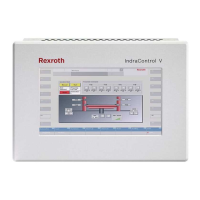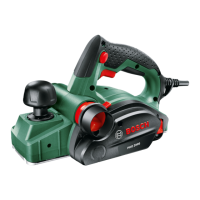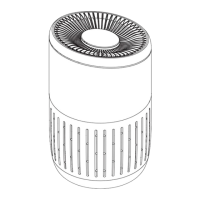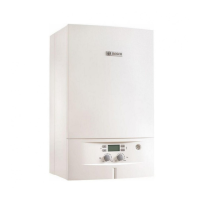Do you have a question about the Bosch 2000 Series and is the answer not in the manual?
Details about E version control panels and their limitations.
Guidance on how to use the manual for keypad programming procedures.
Configures the account number for system reporting to the receiver.
Sets the swinger count for automatic point bypass based on alarm frequency.
Configures the system's response to keyswitch activation for arming/disarming.
Sets custom text displayed on keypads when the system is off and idle.
Sets custom text displayed on keypads when the system is off and idle.
Defines custom text for the keypad display when the system is in service mode.
Configures the dialing format (DTMF or Pulse) for system reports.
Sets the primary phone number for transmitting system reports.
Sets the secondary phone number for transmitting system reports.
Determines how reports are routed between Phone 1 and Phone 2 based on priority.
Specifies routing for Fire Alarm Reports from points or ABC keys.
Specifies routing for Non-Fire Alarm Reports from points or ABC keys.
Specifies routing for Trouble, Missing, Bypass reports from various points.
Specifies routing for Restoral Reports from Fire and Non-Fire points.
Specifies routing for Closing Reports when system is armed or disarmed.
Specifies routing for Opening Reports when system is disarmed.
Specifies routing for Cancel Reports when an alarm is silenced or cancelled.
Specifies routing for System Trouble Reports like Communication Fail.
Specifies routing for System Trouble Reports like Communication Restoral.
Specifies routing for Duress Reports or User Tamper events.
Specifies routing for Test Reports, Service Start, and Service Stop events.
Enables Closing and Opening Reports when the system is armed All On.
Enables Closing and Opening Reports when the system is armed Part On.
Restricts Opening Reports to after alarms and Closing Reports to when points are bypassed.
Sets a delay for alarm reports to help prevent false alarms.
Enables Cancel Reports when an alarm is silenced before the delay expires.
Enables Restoral Reports when points return to a normal state after an event.
Configures system response (buzzer/report) to AC power failure.
Sets a flag for Modem II reports to convert point/user IDs to specific formats.
Configures settings for transmitting reports using Modem II format.
Sets report codes for each group when using Pulse 4x2 report format.
Sets the six-character passcode required for remote programmer access.
Configures the phone number for the control panel to dial for remote access.
Sets the number of rings before seizing the line for remote access when system is armed.
Sets rings before line seizure for remote access when system is disarmed.
Enables Answering Machine Bypass feature for remote programming sessions.
Sets the duration for entry delay when users enter the premises.
Sets the duration for exit delay when users leave the premises.
Allows extended entry/exit delays for specific points, like garage doors.
Controls keypad tone for Exit Delay and Excursion features.
Allows users to arm the system with no entry or exit delay.
Configures the system for Step Outside or Exit User features.
Enables users to temporarily exit while the system is armed without full disarm.
Allows a single user to exit a system armed with no delay, leaving others protected.
Sets the report transmitted when the A key is pressed.
Configures system response at the Alarm Output terminals for the A key.
Enables an acknowledgment tone when the receiver acknowledges the A key report.
Sets custom text displayed when the A key is active.
Sets the report transmitted when the B key is pressed.
Configures system response at the Alarm Output terminals for the B key.
Enables an acknowledgment tone for the B key report.
Sets custom text displayed when the B key is active.
Sets the report transmitted when the C key is pressed.
Configures system response at the Alarm Output terminals for the C key.
Enables an acknowledgment tone for the C key report.
Sets custom text displayed when the C key is active.
Sets the duration in minutes for alarm output at terminals 4 and 5.
Controls the bell test function, sounding the bell for 2 seconds when arming.
Limits non-fire point alarm output to one per arming cycle.
Provides alarm output after two failed attempts to transmit an Alarm Report.
Configures the frequency for transmitting automatic test reports (e.g., 1 Day, 7 Days).
Sets the number of hours until the next test report is sent.
Sets the number of minutes until the next test report is sent.
Defers the Test Report by one interval if another report is transmitting.
Assigns Address 1 to a device, required for text keypads and master copy storage.
Assigns Address 2 to an expansion device.
Assigns Address 3 to an expansion device.
Assigns Address 4 to an expansion device.
Assigns Address 5 to an expansion device.
Assigns Address 6 to an expansion device.
Assigns Address 7 to an expansion device, used for RF Point Expanders.
Assigns Address 8 to an expansion device, used for RF Point Expanders.
Sets the five-digit code for Point 1, defining its behavior and response.
Sets the five-digit code for Point 2, defining its behavior and response.
Sets the five-digit code for Point 3, defining its behavior and response.
Sets the five-digit code for Point 4, defining its behavior and response.
Sets the five-digit code for Point 5, defining its behavior and response.
Sets the five-digit code for Point 6, defining its behavior and response.
Sets codes for Points 7 through 24, defining their behavior and response.
Enter custom text to appear in text keypads for each programmed point.
Defines the logic for Relay 1 activation based on function conditions.
Defines the logic for Relay 2 activation based on function conditions.
Sets Function 1 for Relay Output 1 (Terminal 9).
Sets Function 2 for Relay Output 1 (Terminal 9).
Sets Function 1 for Relay Output 2 (Terminal 10).
Sets Function 2 for Relay Output 2 (Terminal 10).
Includes a bell test in the user test, activating the alarm output.
Includes a battery test, running the system on battery power for 4 minutes.
Includes a communication test, sending a test report to the receiver.
Sets the installer passcode for programming and tests.
Sets the length (3 to 6 digits) for all user passcodes.
Assigns User 8's passcode as the duress passcode for silent alarm activation.
Requires users to enter a passcode to turn the system on.
Defines which user types can change passcodes from the keypad.
Sets the time the RF receiver waits for a point before sending a Missing Report.
Resets all keypad programming prompts to their factory defaults.
Prevents programming from the keypad, requiring a programmer to re-activate.
Disables the system, stopping point processing and keypad function until re-enabled.
Prerequisites and steps to begin programming using a text keypad.
Allows viewing of program prompts and current entries on the keypad.
Enables changing entries for prompts in View Mode.
Provides methods to navigate and select characters for text entries.
Explains how to select Yes/No options in keypad programming.
Step-by-step guide for entering custom text for points at the keypad.
Provides helpful advice for navigating and using keypad programming features.
Details about E version control panels and their limitations.
Guidance on how to use the manual for keypad programming procedures.
Configures the account number for system reporting to the receiver.
Sets the swinger count for automatic point bypass based on alarm frequency.
Configures the system's response to keyswitch activation for arming/disarming.
Sets custom text displayed on keypads when the system is off and idle.
Sets custom text displayed on keypads when the system is off and idle.
Defines custom text for the keypad display when the system is in service mode.
Configures the dialing format (DTMF or Pulse) for system reports.
Sets the primary phone number for transmitting system reports.
Sets the secondary phone number for transmitting system reports.
Determines how reports are routed between Phone 1 and Phone 2 based on priority.
Specifies routing for Fire Alarm Reports from points or ABC keys.
Specifies routing for Non-Fire Alarm Reports from points or ABC keys.
Specifies routing for Trouble, Missing, Bypass reports from various points.
Specifies routing for Restoral Reports from Fire and Non-Fire points.
Specifies routing for Closing Reports when system is armed or disarmed.
Specifies routing for Opening Reports when system is disarmed.
Specifies routing for Cancel Reports when an alarm is silenced or cancelled.
Specifies routing for System Trouble Reports like Communication Fail.
Specifies routing for System Trouble Reports like Communication Restoral.
Specifies routing for Duress Reports or User Tamper events.
Specifies routing for Test Reports, Service Start, and Service Stop events.
Enables Closing and Opening Reports when the system is armed All On.
Enables Closing and Opening Reports when the system is armed Part On.
Restricts Opening Reports to after alarms and Closing Reports to when points are bypassed.
Sets a delay for alarm reports to help prevent false alarms.
Enables Cancel Reports when an alarm is silenced before the delay expires.
Enables Restoral Reports when points return to a normal state after an event.
Configures system response (buzzer/report) to AC power failure.
Sets a flag for Modem II reports to convert point/user IDs to specific formats.
Configures settings for transmitting reports using Modem II format.
Sets report codes for each group when using Pulse 4x2 report format.
Sets the six-character passcode required for remote programmer access.
Configures the phone number for the control panel to dial for remote access.
Sets the number of rings before seizing the line for remote access when system is armed.
Sets rings before line seizure for remote access when system is disarmed.
Enables Answering Machine Bypass feature for remote programming sessions.
Sets the duration for entry delay when users enter the premises.
Sets the duration for exit delay when users leave the premises.
Allows extended entry/exit delays for specific points, like garage doors.
Controls keypad tone for Exit Delay and Excursion features.
Allows users to arm the system with no entry or exit delay.
Configures the system for Step Outside or Exit User features.
Enables users to temporarily exit while the system is armed without full disarm.
Allows a single user to exit a system armed with no delay, leaving others protected.
Sets the report transmitted when the A key is pressed.
Configures system response at the Alarm Output terminals for the A key.
Enables an acknowledgment tone when the receiver acknowledges the A key report.
Sets custom text displayed when the A key is active.
Sets the report transmitted when the B key is pressed.
Configures system response at the Alarm Output terminals for the B key.
Enables an acknowledgment tone for the B key report.
Sets custom text displayed when the B key is active.
Sets the report transmitted when the C key is pressed.
Configures system response at the Alarm Output terminals for the C key.
Enables an acknowledgment tone for the C key report.
Sets custom text displayed when the C key is active.
Sets the duration in minutes for alarm output at terminals 4 and 5.
Controls the bell test function, sounding the bell for 2 seconds when arming.
Limits non-fire point alarm output to one per arming cycle.
Provides alarm output after two failed attempts to transmit an Alarm Report.
Configures the frequency for transmitting automatic test reports (e.g., 1 Day, 7 Days).
Sets the number of hours until the next test report is sent.
Sets the number of minutes until the next test report is sent.
Defers the Test Report by one interval if another report is transmitting.
Assigns Address 1 to a device, required for text keypads and master copy storage.
Assigns Address 2 to an expansion device.
Assigns Address 3 to an expansion device.
Assigns Address 4 to an expansion device.
Assigns Address 5 to an expansion device.
Assigns Address 6 to an expansion device.
Assigns Address 7 to an expansion device, used for RF Point Expanders.
Assigns Address 8 to an expansion device, used for RF Point Expanders.
Sets the five-digit code for Point 1, defining its behavior and response.
Sets the five-digit code for Point 2, defining its behavior and response.
Sets the five-digit code for Point 3, defining its behavior and response.
Sets the five-digit code for Point 4, defining its behavior and response.
Sets the five-digit code for Point 5, defining its behavior and response.
Sets the five-digit code for Point 6, defining its behavior and response.
Sets codes for Points 7 through 24, defining their behavior and response.
Enter custom text to appear in text keypads for each programmed point.
Defines the logic for Relay 1 activation based on function conditions.
Defines the logic for Relay 2 activation based on function conditions.
Sets Function 1 for Relay Output 1 (Terminal 9).
Sets Function 2 for Relay Output 1 (Terminal 9).
Sets Function 1 for Relay Output 2 (Terminal 10).
Sets Function 2 for Relay Output 2 (Terminal 10).
Includes a bell test in the user test, activating the alarm output.
Includes a battery test, running the system on battery power for 4 minutes.
Includes a communication test, sending a test report to the receiver.
Sets the installer passcode for programming and tests.
Sets the length (3 to 6 digits) for all user passcodes.
Assigns User 8's passcode as the duress passcode for silent alarm activation.
Requires users to enter a passcode to turn the system on.
Defines which user types can change passcodes from the keypad.
Sets the time the RF receiver waits for a point before sending a Missing Report.
Resets all keypad programming prompts to their factory defaults.
Prevents programming from the keypad, requiring a programmer to re-activate.
Disables the system, stopping point processing and keypad function until re-enabled.
Prerequisites and steps to begin programming using a text keypad.
Allows viewing of program prompts and current entries on the keypad.
Enables changing entries for prompts in View Mode.
Provides methods to navigate and select characters for text entries.
Explains how to select Yes/No options in keypad programming.
Step-by-step guide for entering custom text for points at the keypad.
Provides helpful advice for navigating and using keypad programming features.
| Brand | Bosch |
|---|---|
| Model | 2000 Series |
| Category | Control Panel |
| Language | English |











